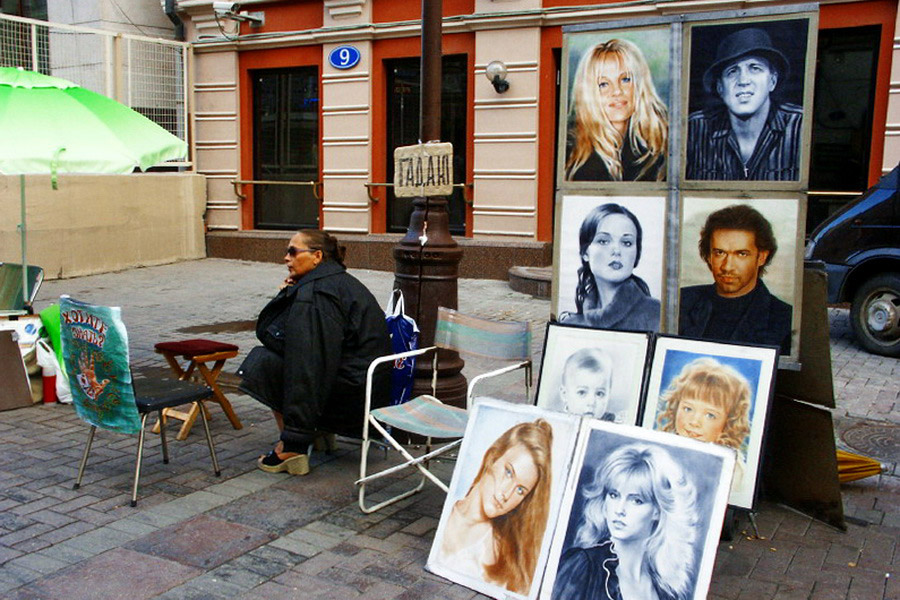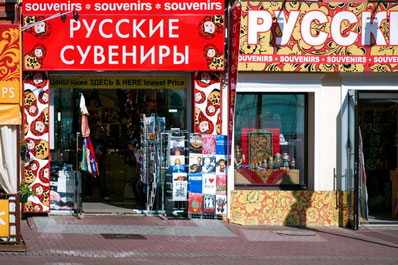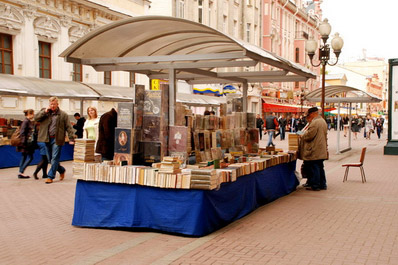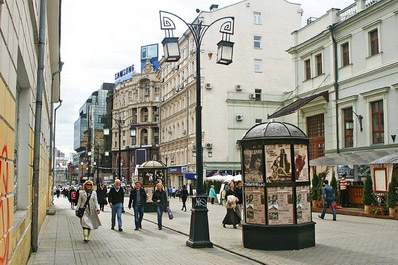History of Arbat

Already in the 11th century Arbat was densely inhabited; there were many wooden houses, shops and, of course, churches. Arbat was also an important crossroads in the outskirts of the Kremlin so it was the place of battles with foreign invaders. It was there that in 1493 the armies of Kazan Khan Muhammad Aul were defeated and put to flight.
It was on this street marched the medieval warriors to protect the southern borders of Moscow. In the 16th century Arbat was populated by Strelets regiments and artisans: Plotnikov Pereulok (Carpenters Lane) was for carpenters; Serebryanny (Silver) – for silversmiths; Denezhny (Money) – for the employees of the Mint. The eighteenth century took Arbat from the workmen, and gave it the nobility.
Arbat became the aristocratic center, the stronghold of the intelligentsia, the so-called aristocratic nest. Arbat and its vicinity were known for the homes of wealthy noble families, the Golitsyns, the Trubetskoys, the Volkonskys, the Sheremetyevs. The old houses with stucco and intricate balconies, fanciful facades say a lot about the tastes of their first owners. Later Arbat was favored and loved by its other famous residents such as Pushkin, Tsvetaeva, and Yesenin. Their home museums are open there. Preserved is the house where Andrei Bely and later the bard Bulat Okudzhava used to live.
The second half of the 19th century saw Arbat radically changing its appearance. It was a fashion to find a home on Arbat and its lanes. The new residents of Arbat were successful businessmen, officials, and representatives of the intelligentsia. Sophisticated mansions with mezzanines and attics buried in green gardens “painted” the new image of Arbat. There were the fashion shops, expensive restaurants and a railway station. By the end of the 19th century Arbat started to acquire the image very close to the contemporary one featuring three-storey buildings, increasing number of stores, the construction of multi-storey guest buildings, restaurants.
After the revolution Arbat became unrecognizable: a dull, gray look, ruthlessly demolished houses, expanded borders of streets and new buildings on the right side, in no way resembling the old ones. The tram rails on Arbat were replaced by tram trolley, the pavement and sidewalks asphalted.
Arbat lost its usual historical appearance and seemed frozen in anticipation. It only came back to life during the NEP times: numerous shops and cafes were opened, the restaurant “Prague” resumed its work, the State Theater named after Vakhtangov was built. But it did not last long. Everything was gone in the 1930s along with the churches demolished in the days of militant atheism.
Under the Soviet government the face of Old Arbat irreversibly changed. In the early 1960s the back streets of Kalinin Prospekt, later renamed the New Arbat, took part of Arbat territory. It led to the destruction of many monuments of architecture of the 18th – 19th centuries. But the appearance of the Old Arbat is still there and almost every house there keeps its own, sometimes unique, history.
In the years of 1974-1986 the pedestrian zone with plenty of small shops and cafes and lively street trade was established on Arbat. The facades of houses were painted pink, yellow, blue, and green. After the collapse of the Soviet Union Arbat turned into a kind of a tourist Mecca for Muscovites and the visitors. Today there are a lot of cafes and restaurants; the New Arbat without any doubt can be called a little Las Vegas - there are prestigious casinos, such as “Metelitsa”, and many nightclubs. There are the largest branches of banks, shops and boutiques, a number of fitness clubs, elite shopping and office centers.You will find there artists, street singers and actors, a variety of Russian souvenirs. Old Arbat has found new popularity and became a favorite place for both Muscovites and guests.




